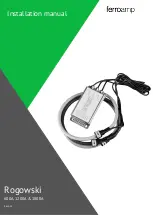
Each GTM transceiver features several loopback modes to facilitate testing:
• Near-end PCS Loopback (Path 1 in the above figure). While in Near-end PCS Loopback, the RX
XCLK domain is clocked by the TX parallel clock (TX XCLK).
• Near-end PMA loopback (path 2 in the above figure).
• Far-end PCS Loopback (path 3 in the above figure). The transceiver in far-end PCS loopback
must use the same reference clock used by the transceiver that is the source of the loopbak
data.
Ports and Attributes
The following table defines the loopback ports.
Table 23: Loopback Ports
Port
Dir
Clock
Domain
Description
CH[0/1]_LOOPBACK[2:0]
In
Async
Loopback control for channel 0/1:
3’b000
: Normal operation.
3’b001
: Near-End PCS Loopback.
3’b010
: Near-End PMA Loopback.
3’b011
: Reserved.
3’b100
: Reserved.
3’b101
: Reserved.
3’b110
: Far-End PCS Loopback.
The following table defines the loopback attributes.
Table 24: Loopback Attributes
Attribute
Type
Description
CH[0/1]_TX_LPBK_CFG0
16-bit
Reserved. Use the recommended value from the Wizard.
CH[0/1]_TX_LPBK_CFG1
16-bit
Reserved. Use the recommended value from the Wizard.
Dynamic Reconfiguration Port
The dynamic reconfiguration port (DRP) allows the dynamic change of parameters of the
GTM_DUAL primitives. The DRP interface is a processor-friendly synchronous interface with an
address bus (DRPADDR) and separate data buses for reading (DRPDO) and writing (DRPDI)
configuration data to the primitives. An enable signal (DRPEN), a read/write signal (DRPWE), and
a ready/valid signal (DRPRDY) are the control signals that implement read and write operations,
indicate operation completion, or indicate the availability of data.
Chapter 2: Shared Features
UG581 (v1.0) January 4, 2019
Virtex Ult GTM Transceivers
47
















































